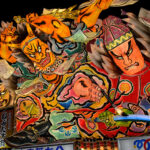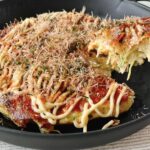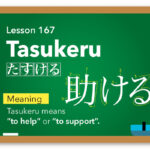

豊臣秀吉 TOYOTOMI Hideyoshi
1537 – 1598
HIDEYOSHI: Successor of Oda Nobunaga
Rise Up From a Farmer to Samurai
Toyotomi Hideyoshi (1537-1598) is one of the most remarkable commanders of samurai army in Japanese history, the ruler of Japan who ended Japan’s most violent period of political and social upheaval, the Sengoku period, and reunified the country after 120 years of political fragmentation. He was born in 1536 in Owari province, Japan, as a child of a farmer and foot-soldier Yaemon and his wife. Later he was trained as a military aide to Matsushita Yukitsana (1551–1558), and then with Oda Nobunaga (1558–1582). After Akechi Mitsuhide defeats Nobunaga in the Honnoji no hen Incident in 1582, Hideyoshi was in the Chugoku region, but immediately returned to Kyoto to avenge Akechi, formally succeed Nobunaga, and achieve unification of Japan.
Early Life
Toyotomi Hideyoshi was born in 1536 in a village called Nakamura in Owari province, Japan as a son of a farmer and foot-soldier Kinoshita Yaemon who served the Oda clan and his wife Naka (Omandokoro). His childhood name was Hiyoshimaru, he changed his name later from Kinoshita Tokichiro to Hashiba Hideyoshi, and then to Toyotomi Hideyoshi. It’s said that Hideyoshi was small for his age, skinny, and ugly.
His father Yaemon died when he was seven years old and his sister about ten. Hideyoshi’s mother Naka remarried soon with Chikuami who served Oda Nobuhide, the daimyo of the Owari region. Hideyoshi was in conflict with his father-in-law and was always abused by Chikuami. His parents then sent him to a temple to get an education, but he ran away and went to Suruga country, struggled to survive on his own, and started to look for a position to serve as an officer. His circumstance was completely different from that of Oda Nobunaga or Tokugawa Ieyasu who was born to be a samurai with a promised successful future.
In 1554, Hideyoshi joined the service of Matsushita Yukitsuna (Matsushita Kahei) who was a retainer of the powerful Imagawa family in Totomi province when he was around 17 years old. Matsushita taught young Hideyoshi, Kinoshita Tokichiro at that time, reading and writing, martial arts, learning, military laws, and more.
Around 1557, he left the Matsushita family and returned home to serve the Oda family that reigned Owari. First, he served Nobunaga as a “zoritori (sandal bearer)” who was always carrying his lord’s sandals and providing them when Nobunaga went out of the house. However, he did not just offer the sandals — instead, he put the sandals in his bosom to warm them with his body temperature during the cold winter. Such attention had come to be appreciated, and his leadership skills and authoritative prowess fueled his rising to become one of Nobunaga’s three right-hand men.
Career
One of his turning points was in 1566. Hideyoshi led a raid and captured Inabayama Castle, so Nobunaga rewarded him and he became a general. When Nobunaga began his campaign to conquer central Japan in 1568, Hideyoshi was commanding entire armies and winning battles on Nobunaga’s behalf. In 1573, Nobunaga’s troops defeated all of its enemies in the area and Hideyoshi received the daimyo-ship of three regions within Omi province. Then by overthrowing two powerful daimyos, Hideyoshi became a lord of Nagahama, Ōmi province. Subsequently, he adopted the surname Hashiba, lord of Chikuzen. By 1580, Oda Nobunaga had consolidated power over 31 of the 66 provinces in Japan.
Nobunaga was assassinated in 1582 by his retainer Akechi Mitsuhide who turned his army against his lord. Hideyoshi, who was embarking on the suppression of western Japan, immediately went back to avenge on Mitsuhide and accomplished it at the Battle of Yamazaki just 13 days after Nobunaga’s death. Then, a succession fight broke out. Hideyoshi supported Nobunaga’s grandson Oda Hidenobu to succeed as head of the Oda family, and two powerful vassals that were for Nobunaga’s third son Oda Nobukatsu. In 1583, Hideyoshi began to build Osaka Castle which is a symbol of his power and intent to rule all of Japan. Hideyoshi eliminated many rivals and became a prominent member of the Oda clan, and after some dead-end battles and conquering the remaining warrior clans, he accomplished to make peace with his enemies and established himself as successor. Hideyoshi proceeded to unify the entire nation at a rapid pace, and by 1590 the whole country came under his control, bestowing him the recognition as the second of Japan’s three unifiers after Nobunaga. His major ambition was to conquer Ming (China) which meant that he had to pass through Korea to reach China. He attempted to invade Korea two times, sending 160,000 troops to Joseon Dynasty (Bunroku Keicho no eki) in 1592, but failed. Then, he dispatched troops to Korea again and began a war called Keicho no eki in 1597. However, it abruptly ended with his death in 1598. He was 63 years old.
Hideyoshi was regarded as a unifier who won great success despite his peasant background, united Japan and ended the Sengoku period, and rose to the position of governing politics called Kanpaku. He had always been seen as an upstart. Even today, it’s hard to explain how he so rapidly rose through the Oda ranks and still seen as very unique.
Unification Policies
Hideyoshi issued some strict edicts as unification policies such as the disarmament of the peasantry and the separation of the classes, comprehensive land survey (Taiko kenchi: Taiko was a traditional title for the former office of kampaku, chancellor, that Hideyoshi assumed in 1591), and Christian ban. For the principle of the separation between samurai and peasants, he confiscated any weapons owned by the common people that was called “sword hunt” (katanagari) which allows only samurai and nobles to possess arms. He tried to clarify the boundaries between the various social classes in Japan and to prevent uprisings of warrior-monks and peasants, and this policy was successful. He also ordered a nationwide populatin census and a survey of all the lands Taiko-kenchi (the land survey) to measure the exact sizes of the different domains, relative fertility, and expected crop yield because all such information was helpful to set taxation rates. This land survey was carried out throughout Japan from 1583 to 1598 and completed shortly before he died. In addition, he banned and executed Christian missionaries from Japan, and tried to eliminate foreign thoughts.
Kamon (Emblem)
In Japan, each family has their own family emblem which is succeeded and called “kamon” to express the family and status. Kamon was first used in the Heian period and later spread to samurai families that used the family emblem as symbols on flags and helmets to distinguish each side in the battle. Later, kamon became a sign to distinguish the family (surname). Toyotomi Hideyoshi obtained the “Kiri (paulownia) mon” from his lord, Oda Nobunaga. Overtime he changed its design several times. Originally, Kirimon with kiku (chrysanthemum) mon was only used by the emperor family and it is said that Hideyoshi got it from the emperor when he started to adopt surname Toyotomi.
.
.
.




